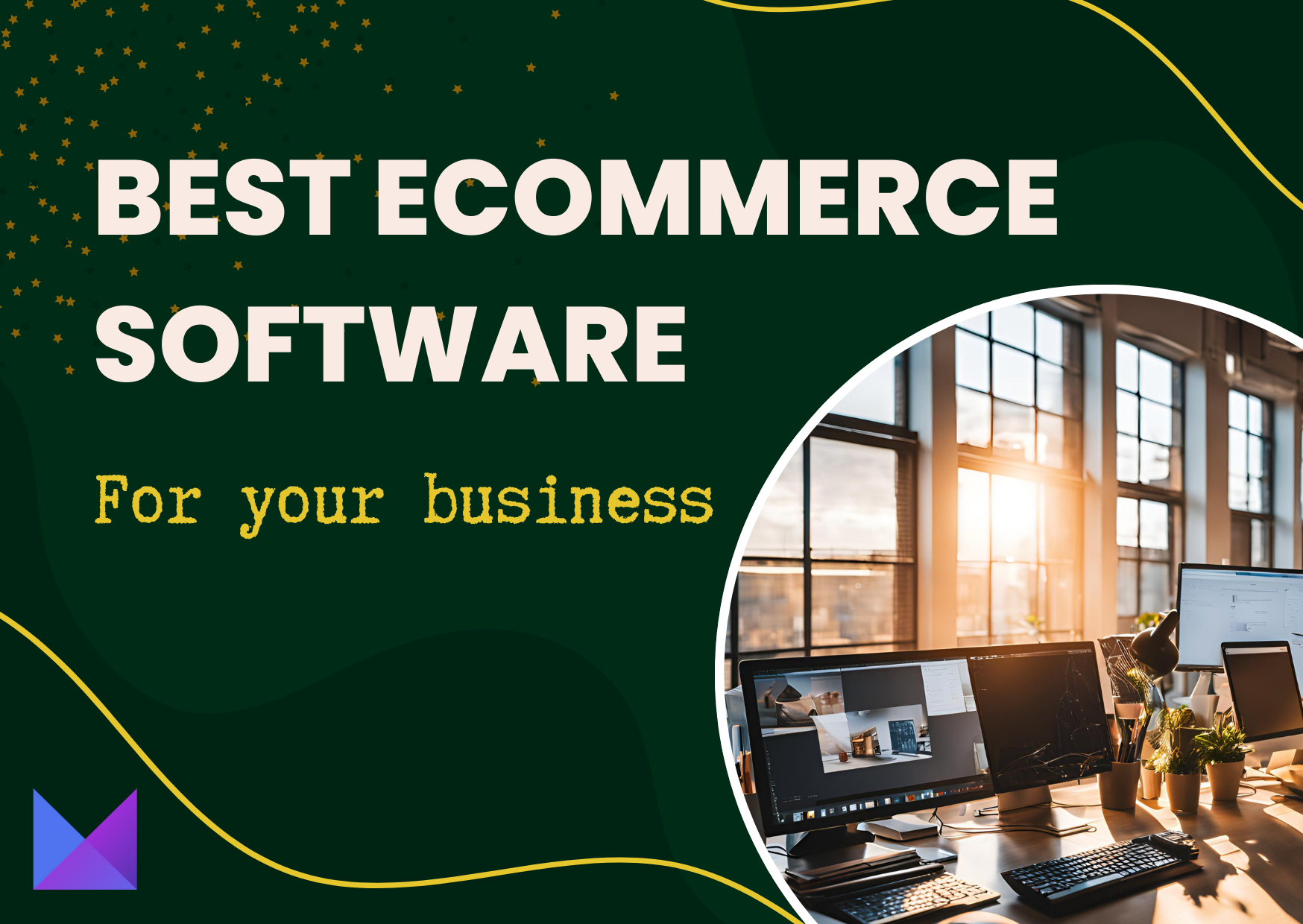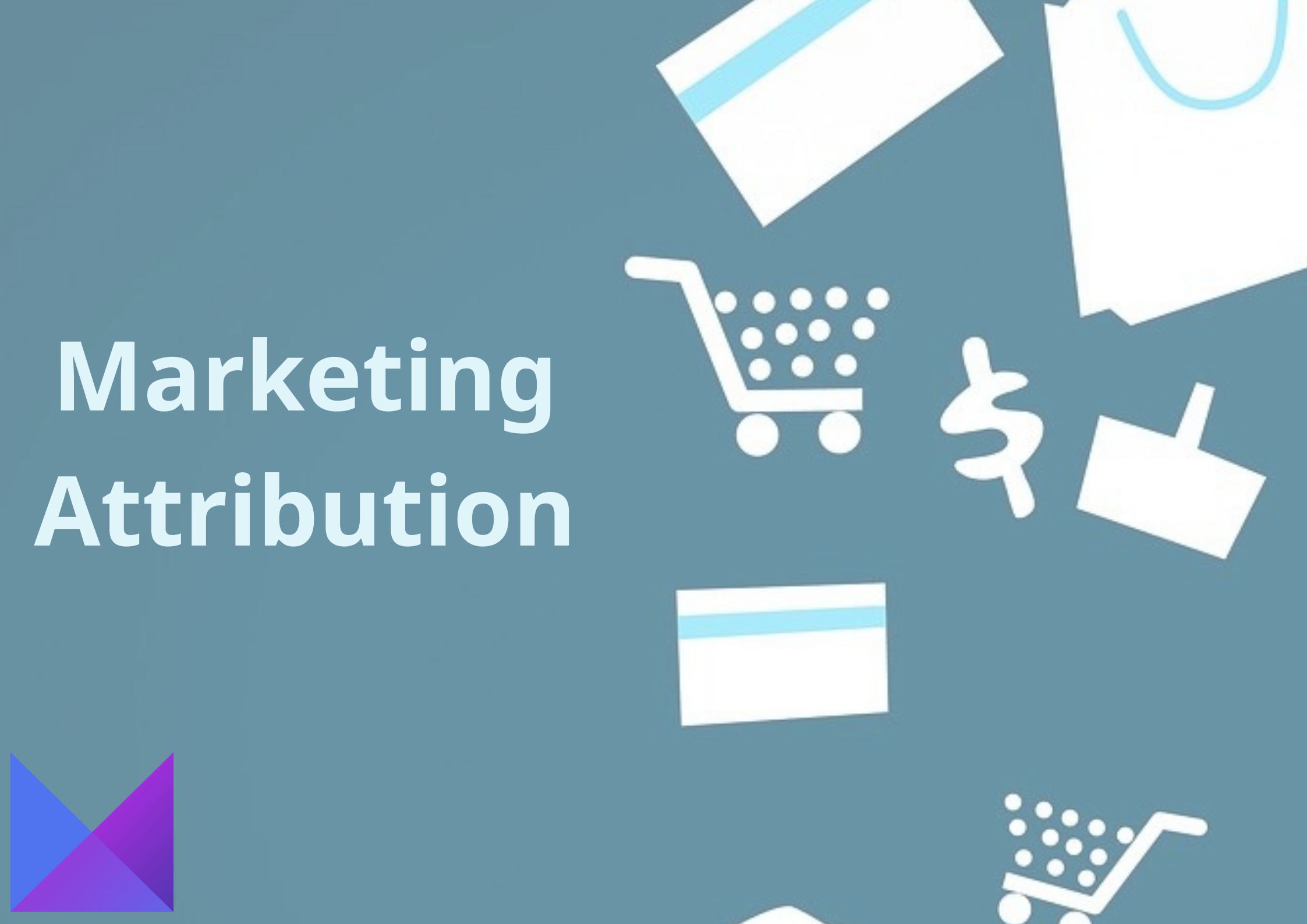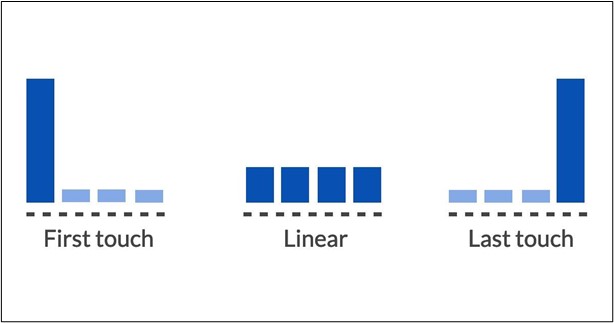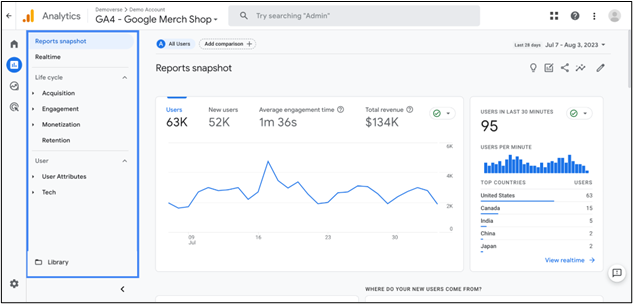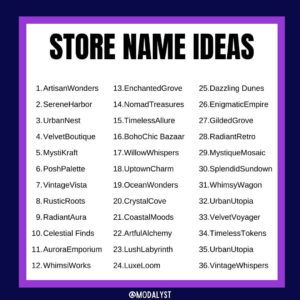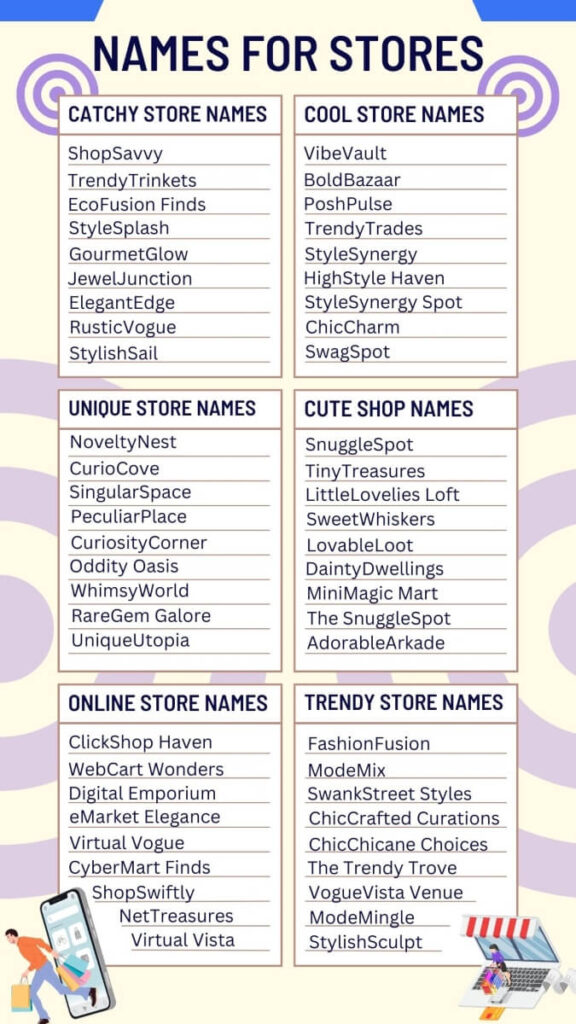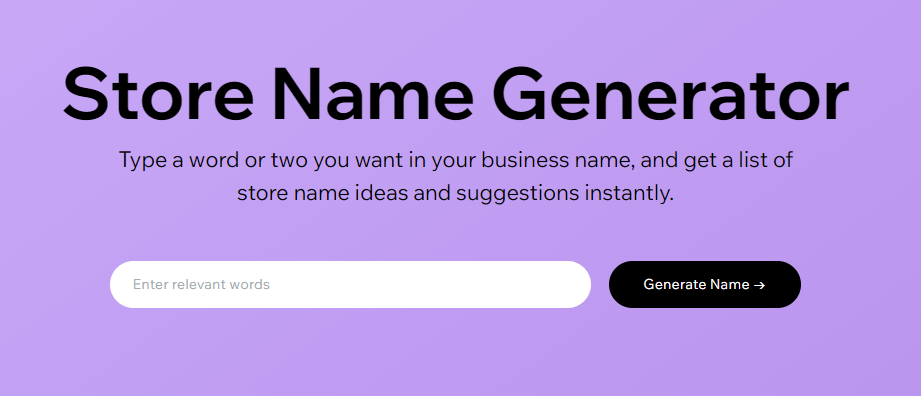Choosing the best ecommerce software is crucial for small business owners and entrepreneurs aiming for success. Whether you’re launching your first online store or scaling an existing one, the right platform can streamline workflows and save you hours of frustration.
This guide will help you understand what E-Commerce software is, explore its features, and provide tips for selecting the perfect platform to meet your business needs. By the end, you’ll have a clear, actionable road map to confidently choose the right solution.
What is eCommerce Software?
eCommerce software is a tool that enables businesses to sell products or services online. It streamlines key operations such as managing products, processing payments, tracking orders, and analyzing sales.
Think of it as the foundation of your online store, a platform that supports every aspect of running your business digitally. It doesn’t matter if you’re a solo entrepreneur, a small business, or a rapidly growing startup, the right eCommerce software can make your operations more efficient and scalable.
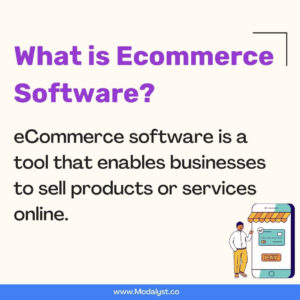
how to choose the best Ecommerce software for your business
Choosing the best software for your ecommerce business is a crucial decision that can significantly impact your efficiency, growth, and overall success. there isnt a one answer that fits all. but here is the 3 main factors to consider:
1. Pricing of the software
Ecommerce software usually comes with a monthly or yearly subscription fee. While some platforms offer an all-in-one pricing structure (Including site template, domain, and ecommerce hosting), others have tiered plans based on features or transaction fees. Before committing to a plan, take the time to carefully assess your budget and business needs. Choose a reputable and reliable provider that offers live support to guide you through every step when needed.
2. Scalability As You Grow
As your business grows, so will your need for an eCommerce platform that can handle increased traffic and sales volume. Choose a solution that can scale with your business without compromising performance or incurring additional costs.
Below, you’ll find a list of the most popular software options, known for their safety and excellent cost-value ratio. For more calculations to better understand your business profitability, check our Profit margin calculator.
3. Ecommerce Features
Every business has unique needs when it comes to selling online. Choose an ecommerce software that not only supports your product inventory but can also adapt to your needs if you decide to switch to a dropshipping business model. or wehter you’ll need specific integration to 3rd party, or designated built in features for selling overseas or in big marketplaces such as Ebay and Amazon.
Why Is E-commerce Software Vital for Online Retail Businesses?
Setting up an online store comes with challenges like inventory management, payment gateway integration, and serving customers across devices. eCommerce solutions streamline the process, offering an intuitive interface that allows you to efficiently manage your store. This frees up your time to focus on what truly matters: delivering value to your customers, marketing your business, and supporting your clients.
10 Main Benefits for choosing the right software
a. Comprehensive Store Management – e-commerce platforms allow businesses to handle everything from product catalogs and inventory to customer interactions and sales tracking in one centralized system. This eliminates the need for multiple disconnected tools and streamlines business operations.
b. Enhanced customer experience – modern ecommerce software offers sophisticated user interfaces and features that improve customer interactions, such as:
- Personalized product recommendations
- Seamless search and navigation
- Multiple payment gateway integrations
- Easy checkout processes
- Mobile-responsive design
c. Sales and marketing integration – these platforms typically include robust marketing tools that help businesses:
- Connect your social channels and manage them effortlessly.
- Create targeted promotional campaigns.
- Implement email marketing strategies.
- Track customer behavior and preferences
- Generate detailed sales reports and analytics.
- Manage customer segmentation and loyalty programs.
- Gather and showcase user testimonials and recommendations.
e. Scalability and flexibility – advanced ecommerce solutions can easily scale with business growth, supporting:
- Expansion to multiple sales channels
- Integration with different marketplaces
- Handling increased transaction volumes
- Adapting to changing market demands
f. Inventory and order management – eCommerce software provides sophisticated inventory tracking capabilities, enabling businesses to:
- Monitor stock levels in real time.
- Automate reordering processes
- Manage multiple warehouses
- Track shipping and delivery status
- Reduce human errors in order processing.
g. Security and compliance – these platforms offer robust security features to protect both businesses and customers, including:
- Secure payment processing with multiple international payment options
- Data encryption
- Fraud detection mechanisms
- Compliance with industry standards like PCI DSS
- Protection against cyber threats
h. Cost-effectiveness – by automating numerous business processes, eCommerce software helps reduce operational costs through:
- Minimized manual labor
- Efficient resource allocation
- Reduced administrative overhead
- Improved productivity
i. Global market accessibility – modern e-commerce platforms enable businesses to:
- Reach international markets
- Support multiple currencies
- Offer localized shopping experiences
- Manage cross-border transactions
- Overcome geographical limitations
j. Data-Driven decision – making advanced analytics and reporting tools within eCommerce software provide:
- Detailed insights into sales performance
- Customer behavior analysis
- Conversion rate optimization
- Predictive modeling
- Strategic planning support
k. Competitive advantage – by leveraging comprehensive ecommerce software, businesses can:
- Stay ahead of technological trends
- Quickly adapt to market changes
- Offer superior customer experiences
- Differentiate themselves from competitors
Businesses should carefully evaluate their specific needs and choose an eCommerce platform that offers the right balance of features, scalability, and affordability to support their unique goals and growth trajectory.
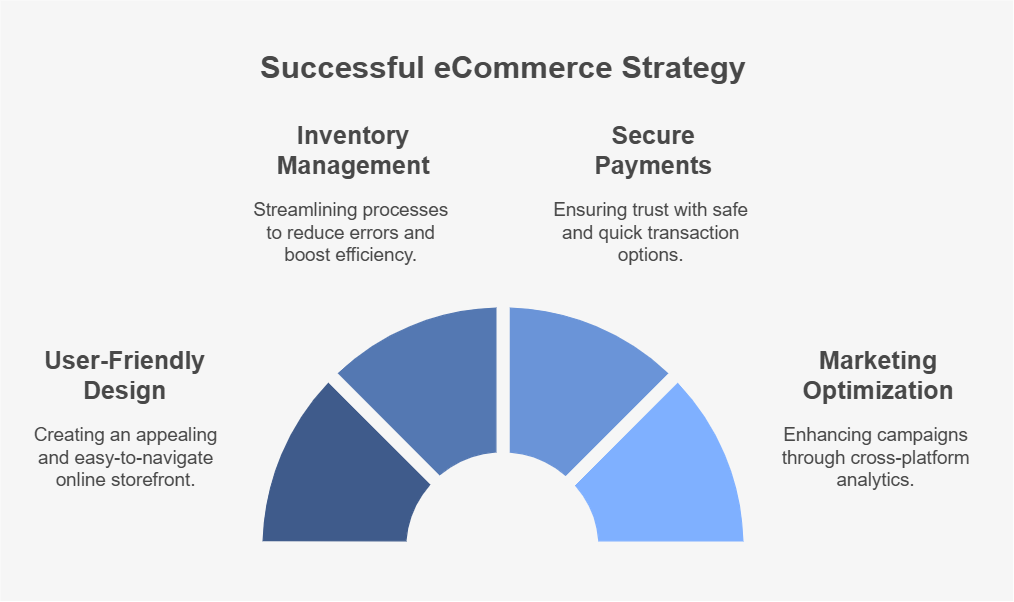
7 Features to Look for in eCommerce Software
The best eCommerce software platforms come loaded with features to simplify store management and improve the customer experience. Here’s what you should look for:
1. Storefront – Templates & Design Tools
First impressions matter. Customizable themes and drag-and-drop editors allow you to create attractive, branded online stores without needing design expertise. This feature ensures your website stands out from the competition.
2. Product Management
Comprehensive features for uploading, organizing, and tracking products are essential. Look for tools that support bulk uploads, detailed categorization, and real-time inventory updates.
4. Payment Processing
A seamless, secure checkout experience keeps customers coming back. Choose software that supports multiple payment gateways (PayPal, Stripe, credit/debit cards) and currencies to expand your customer reach.
5. Order Management
This includes tracking orders, processing refunds, and providing shipment updates. A well-organized order management dashboard will keep your operations smooth and your customers satisfied.
6. Analytics and Reporting
Data is your ultimate advantage. Choose platforms that offer valuable insights into sales trends, customer behavior, and traffic sources, empowering you to refine your strategies and craft a more effective marketing plan.
7. Integration Capabilities
Your eCommerce software will likely need to integrate with other essential tools like email marketing platforms, CRM systems, dropshipping extensions, and shipping solutions. Choose a platform that supports seamless integrations to streamline your workflow and keep everything running smoothly.
Types of eCommerce Software
Different businesses have different needs. Here are the primary types of eCommerce platforms and their pros and cons:
Hosted eCommerce Software
Examples include Wix, Shopify, and BigCommerce. These platforms offer easy, all-in-one solutions with hosting, security, and regular updates included.
- Pros: Easy to use, no technical expertise required, great for startups.
- Cons: Limited customization and dependency on the host.
Self-Hosted Platforms
Examples include WooCommerce and Magento. You handle hosting yourself, giving you complete control over the platform and easier migration if needed.
- Pros: Full customization, scalable for larger stores.
- Cons: Requires technical skills or developer support, higher setup costs.
Open-Source eCommerce Software
Examples include PrestaShop and OpenCart. These platforms are free to download and modify.
- Pros: Cost-effective, customizable, no licensing fees.
- Cons: Requires coding knowledge and ongoing maintenance.
How to Choose the Right E-commerce Software
With so many options on the market, narrowing down the best eCommerce software for your business can feel overwhelming. Follow these steps to ensure you make the right choice:
1. Assess Your Business Needs
Consider your current and future needs. Think about your product catalog and niches, expected traffic, and budget. A scalable platform is critical for growing businesses.
2. Evaluate Ease of Use
For non-technical users, a simple interface with drag-and-drop functionality goes a long way. Look for platforms that prioritize user experience.Look for Versatility
Will the platform support your growth? Ensure your chosen software can handle increased inventory, traffic, and new market opportunities as your business expands.
3. Check Integration Options
From email marketing tools to shipping software, integrations allow you to enhance your online store’s capabilities without juggling multiple systems.
4. Prioritize Security
Your customers must feel safe sharing their payment information. Look for platforms with robust encryption, PCI compliance, and fraud detection features.
5. Explore Customer Support Options
Reliable, round-the-clock support is crucial when you encounter technical challenges. Opt for platforms with responsive customer service and comprehensive documentation.
5 eCommerce Software Platforms You Should Try in 2025
Here’s a brief roundup of the best eCommerce solutions on the market:
- Wix: Great for small businesses that want visually stunning storefronts without needing technical expertise.
- Shopify: Perfect for entrepreneurs looking for a user-friendly, all-in-one platform.
- WooCommerce: Ideal for WordPress users needing a customizable, scalable solution.
- BigCommerce: Designed for mid-size to large businesses with advanced features.
- PrestaShop: A great open-source alternative for businesses with in-house technical talent.
Compare pricing, features, and reviews to identify the platform that aligns with your goals.
Benefits of Using eCommerce Software
Still on the fence? Here’s why investing in eCommerce software is a smart move:
- Simplifies Store Management: Say goodbye to cluttered spreadsheets and manual processes.
- Reduces Costs: Automating workflows saves you time and money.
- Improves Customer Experience: Professional designs and user-friendly navigation build trust and loyalty.
- Provides Actionable Insights: Data analytics allow you to make smarter, more informed decisions.
Common Challenges and How to Overcome Them
- Initial Setup: Tutorials and professional services can help you avoid startup frustrations.
- Scaling Costs: Choose a platform with affordable plans that grow alongside your business.
- Integration Issues: Confirm compatibility with essential third-party apps before committing to a platform.
The Future of eCommerce Software: The Rise of AI Tools
When it comes to supporting commercial use and enhancing the overall design of an eCommerce store, there are a range of AI tools and software solutions available. These tools can help streamline various aspects of your business, from product image editing to content improvement. Here are some of the best AI tools and software to consider:
- Adobe Photoshop: A widely recognized tool for professional image editing, Adobe Photoshop offers a multitude of features to enhance your product photos and create visually appealing designs.
- Canva: Canva is a versatile graphic design platform that enables you to create stunning visuals, social media posts, and marketing materials. With its easy-to-use interface and vast collection of templates, you can effortlessly elevate your eCommerce store’s design.
- Grammarly: As a writing assistant tool, Grammarly helps refine your product descriptions, blog posts, and other content. Its advanced grammar and style suggestions ensure your written communication is clear, error-free, and engaging.
- Luminar AI: Luminar AI is an AI-powered photo editing software that offers a range of automated editing tools. With its advanced image enhancement capabilities, you can quickly enhance product images and create stunning visual content.
- Pixlr: Pixlr is a user-friendly online photo editing tool that allows you to retouch and enhance product images with ease. It offers a wide range of filters, effects, and editing functionalities to make your eCommerce store visually appealing.
By incorporating these AI tools and software into your eCommerce workflow, you can enhance the visual appeal of your store, improve product images, and create compelling content that captivates your customers. Remember to explore the features and functionalities of each tool to determine which ones align best with your specific needs and budget.
FAQs About eCommerce Software
It’s used to manage online stores, handling sales, inventory, payments, and customer data.
Not necessarily. Many platforms, like Shopify and Wix, are beginner-friendly.
Prices of ecommerce software’s in the market, range from free (open-source) to $29+ per month for premium platforms.
The best one is really depends on the needs of each business. usually, for small business owners, Wix and Shopify are excellent choices for their ease of use, affordability and built in features.


